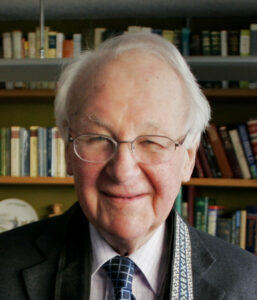The So What Question Makes The Sermon Memorable
The So What Question Makes The Sermon Memorable
Many sermons are easily forgotten because the preacher forgets that the so what question makes the sermon memorable for the hearers.
Wondering About The So What Question and Sermons
When I was in grade school we got a new preacher at the church that my family attended. It didn’t take  long to realize that he was an easily forgettable preacher. He had developed a style of preacher where he stood behind the pulpit as he preached, with both hands holding a very large Bible in his hands the whole time. That’s how he stood–the whole sermon long. He used no gestures, which violates the rule of speaking that says that 55% of our communication is body language. You can read about that in this earlier post on this blog. He also had a policy that he never used an illustration! That violates so many communication rules as you can read about in several posts on this blog. But maybe the most confusing thing was that he also rarely made any application to his sermons.
long to realize that he was an easily forgettable preacher. He had developed a style of preacher where he stood behind the pulpit as he preached, with both hands holding a very large Bible in his hands the whole time. That’s how he stood–the whole sermon long. He used no gestures, which violates the rule of speaking that says that 55% of our communication is body language. You can read about that in this earlier post on this blog. He also had a policy that he never used an illustration! That violates so many communication rules as you can read about in several posts on this blog. But maybe the most confusing thing was that he also rarely made any application to his sermons.
I actually got to ask him about his preaching style. When I was in high school, he invited several of us teenagers who had been on mission trips the preaching summer to come for a “reporting” time in his office. During the summer on that mission trip I heard effective preaching. So, I asked him how he developed his preaching style. His response was that he didn’t want people to remember an illustration. He feared that using an illustration or a gesture, or making an application would draw attention away from the Word.
As a result, I don’t remember one of his sermons–not one. And he was my pastor for ten years!
The Church is Not An Education Institution

Pouring Information In
When I went to seminary, the place where I was supposed to learn about how to make preaching effective, I didn’t learn that the so what question makes the sermon memorable for hearers. Instead, I was taught that the purpose of the sermon was to educate people about the Bible. Toward the end of my time in that institution I wrote a Masters Thesis in which I explored the concept of preaching in the New Testament. I reflected on the fact that the word for “teaching” is rarely used to describe a preaching event. The only time a monologue presentation is described in the New Testament is when the good news about Jesus is being proclaimed. Other than that, preaching is described as a “dialogue”.
I also reflected that if education is the goal, then we are using an outdated method. Monologue presentations result in pretty poor memory in a culture that is steeped in fast-moving images.
Asking The So What Creates Memorable Moments In The Sermon
 Biblical knowledge without Biblical application will be quickly forgotten. I’ve come to believe that the purpose of preaching is to create transformation in the people who listen. Encountering God through his inspired word changes people!
Biblical knowledge without Biblical application will be quickly forgotten. I’ve come to believe that the purpose of preaching is to create transformation in the people who listen. Encountering God through his inspired word changes people!
So, to create a memorable sermon, you need to ask the “so what?” question. When you look at the preaching and teaching of the New Testament, you’ll find that the authors emphasized application. Paul wrote, “For it is not the hearers of there law who are righteous before God, but the doers of the law who will be justified.” (Romans 2:13). James, the brother of the Lord gave this warning in his letter: “be doers of the Word, and not hearers only, deceiving yourselves.” (James 1:22)
Creating a “So What” Message
The so what question makes the sermon memorable for your church. So, how do you go about creating a “So What?” message? It’s not difficult. As you write prepare your message, you simply have to keep asking the “So What?” question. How does the truth you are presenting impact your life, as well as the lives of your hearers? Think about practical applications of your message, as well as illustrations that bring the message to the daily life of your hearers.
John Stott, eminent Bible scholar and teacher of preaching, put it this way:

John Stott
The word “illustrate” means to illuminate, to throw a light on a dark object, and this is what our sermon illustrations should do. People find it very difficult to handle abstract ideas; we need to convert them either into symbols (as in mathematics) or into pictures. (John Stott, The Challenge of Preaching (Kindle ed. (Cambridge: Wm B. Eerdmans, 2013) location 1102).
So remember as you prepare your message this week: the so what question makes the sermon memorable for your hearers. Ask it often in your work.



